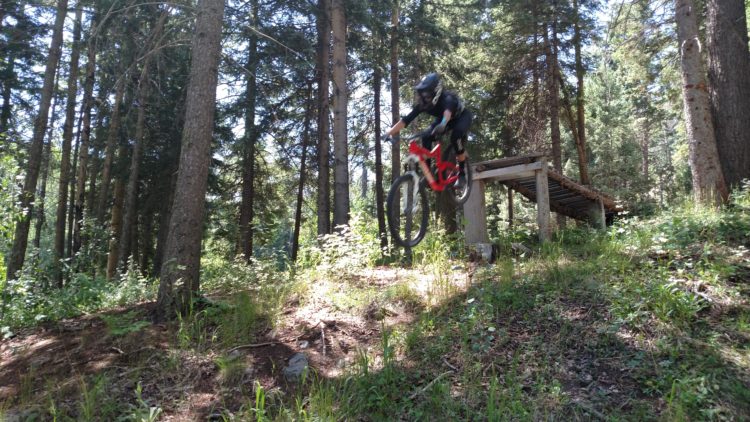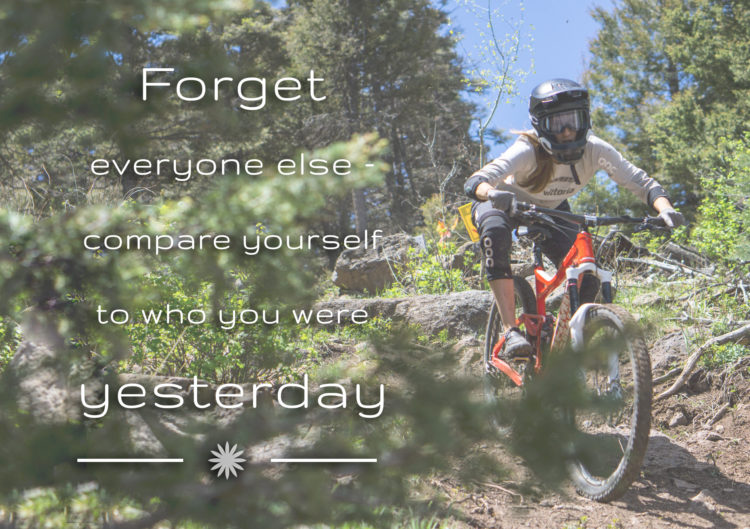How I Learned How to Learn
1 Dec 2016
This is Part I of a little mini series on “learning to learn.” Part II will feature some pro tips on learning from professional skills coach Lee Likes Bikes, and Part III will give you a blow by blow of how I learned how to wheelie in a week. Sound fun? Cool, let’s get started.

So, first off — I consider learning itself to be a skill. Why?
Because I used to be bad at it, and now I’m not. I think we often confuse the actual process of learning with acquiring a skill. Just because someone learned something quickly doesn’t necessarily mean they are good at learning — it might just mean they already know how to do something similar, and therefore were able to pick up the new skill quickly. When you’re able to learn something completely foreign — through a repeatable process of seeking expert advice, practice and patience (PATIENCE PATIENCE). Then, and only then, do you understand how to learn.
In the past, while I would occasionally pick up a MTB skill quickly, my learning process was a certified disaster. If I didn’t pick something up in the first session, I immediately assumed I would never figure it out. I was hampered by a series of limitations (I don’t hit drops, I suck at riding wet roots, I don’t know how to bunny hop), and I would say things like “I don’t know how to bunny hop so I can’t do x,y,z” like that was a fixed state of things, and then I would pout. Okay, maybe not exactly, but you get the point.
I’ve since developed the following process for improving my ability to learn new skills, and that’s what I want to share with you today. The best part is this works for bike skills, but it always works for pretty much everything else. Win win.
Step One: Start where you are, not where you think you should be.
This is a big one for me. For the first two years I raced mountain bikes I was hampered by this feeling that I was playing constant catch up to girls who were way far ahead of me in every way. (Not going to lie, I still feel like this occasionally). This meant that if I was going to go out and practice my jumping skills, it would always be in reference to the massive drop that so-and-so hit and posted a picture of on Instagram. (Social media can be evil in this regard). And with that reference, everything was a failure. There was literally no way to succeed. To truly learn something, you have to accept your starting point, even if it is miles away from your end goal. Having a lofty goal is great, but not if it’s driving you nuts, and not if it’s based on what someone else is doing.
If you can’t hit drops, that’s cool. Start with popping off a curb. Learn the proper form and get some expert advice (more on coaching in Part II). When you hit a one foot drop, crack open a bottle of champagne. Celebrate that shit. Forget everyone else — just compare yourself to who you were yesterday.
Step Two: Embrace a growth mindset and ditch your limits.
I’ve written about growth mindsets in depth before, as have many other smarter people. The point is — all those “I can’t” statements are unhelpful AF. If you believe you can change, you can. If you believe you can improve, you can. Serious physical or health limitations aside, our biggest limiting factor is almost always our mind. Given enough time, enough patience, enough direction — you can do the things you see as impossible.
Step Three: Practice. Practice. Practice. Patience. Patience. Patience.
We’ve all heard of the 10,000 rule, and we’ve all heard a million renditions of “practice makes perfect.” And yet, a lot of us seem to feel like this doesn’t apply to us. If you’re like me, your internal narrative goes something like “it’s not that I’m not willing to put in the practice, it’s just that I don’t get it, I’m not making any progress, I’m just making the same mistake over and over again.” But the truth is that sometimes improvement is hard to see, and sometimes you have a do something wrong for days on end before it clicks and your body and mind start working together. If you want to learn something, do it everyday. It doesn’t have to be for hours on end — I find that 15 to 30 minutes of working on a new skill is ideal, as I don’t get too tired and frustrated — but it does have to be everyday. Be honest, how many times in your life have you practiced the same skill every day for a week, a month? If the answer is never, you aren’t tapping your potential to learn.

Step Four: Get to know your learning process.
I find that I go through a pretty similar cycle every time I try to learn a new skill. The first few sessions are great and I start to see improvement as I pick off the easy stuff, and begin to understand the theory of the skill. Then, once I understand the theory, I expect myself to immediately be able to execute it. After all, I can see myself doing it in my head, I understand what I’m supposed to be doing, so why is it so hard? Why aren’t I doing it? This phase is the hardest and it can go on for days, weeks, months. And it is frustrating. I usually hit a point where I get angry and want to give up. And then, just when I’ve relegated myself to never being able to do it, something clicks. Now that I’ve gone through this a few times, I’ve been able to recognize the signs, and while I still get frustrated, I embrace it as part of the process — and I know I have to push through a lot of rough practice sessions to get where I’m trying to go.
Step Five: Seek expert advice and be open to it.
This is probably the most important one on here, but it’s not achievable until you’ve embraced Steps One – Four. For example, if you refuse to accept your starting point, you probably won’t like the advice you get because your coach will be telling you to practice the pumptrack while you want to be hitting 30ft doubles. And likewise, if you have a lot of self-imposed limits, you will drive your coach up the wall with “I can’t” statements. And if you don’t practice, you’re wasting everyone’s time.
I’ll be going WAY deeper on the idea of seeking and accepting advice in Part II of this series, which will be all about skills coaching, why you should do it, and how to maximize the benefit you get from it. I’ll be bringing in some expert commentary from Lee Likes Bikes, so if you have any questions you want me to ask him, pipe up in the comments!
And make sure you check out Part II and Part III of this learning series.






Pingback: The Path to Reduced Suckage (and Other Guidance from Lee Likes Bikes) | Syd Schulz
Great advice. I too often gauge my success based on a comparison to others rather than to my precious self. Overcoming that and working to improve myself for me, not because of someone else’s skill, will help me progress.
Just discovered your site and looming forward to reading more!
Thanks for the comment Whitney. Overcoming that tendency to compare to others is definitely step 1 — and it’s a process, certainly doesn’t happen right away.
Pingback: I learned how to wheelie in a week — here’s how | Syd Schulz